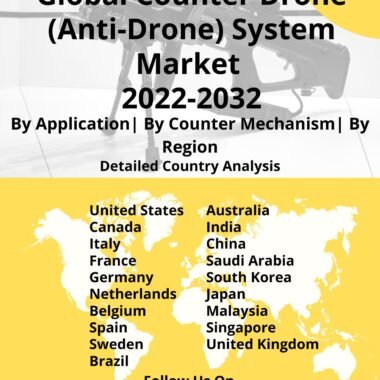Description
Fire Control Systems Market
Frequently Asked Questions of Fire Control Systems Market
A fire-control system, also known as an FCS, is made up of a number of interconnected parts, often a gun data computer, a director, and radar. Its purpose is to help a ranged weapon system target, track, and hit its target. It accomplishes the same work as a human gunner, but it makes an effort to do so more quickly and precisely. Three layers of complexity may be involved in naval gun fire control. Local control began with crude gun installations that were individually aimed by the gun crews.
All of the ship’s guns are pointed at a single target through director control. Battleship fleet operations were centered on coordinated firing from a formation of ships at a single objective. Corrections are made to the firing solution based on the observation of earlier shots in order to account for the surface wind velocity, firing ship roll and pitch, powder magazine temperature, drift of rifled projectiles, individual gun bore diameter adjusted for shot-to-shot enlargement, and rate of change of range. Like all high-performance computers nowadays, fire control computers are digital. Practically any input may be incorporated thanks to the improved performance, including changes in air density and wind speed as well as barrel wear and distortion brought on by heat.
Any type of gun will produce these kinds of effects, and fire-control computers have begun to develop on ever-smaller platforms. One early application of automated guns was for tanks. Any type of weapon that has variable launch or firing parameters, including machine guns, small cannons, guided missiles, rifles, grenades, and rockets, can be used to aim with them. Typically, they are mounted on boats, submarines, planes, tanks, and even some small guns. Environmental data may occasionally need to be collected for very long-range rockets at great heights or in the space between the launch site and the target. To collect this data, satellites or balloons are frequently utilized.
Major factors driving Fire Control Systems Market Growth
Increasing demand for new platforms will be driving the Fire Control System market size. One of the other significant driver will be the sustainment programs of existing platforms. Sustainment programs will be driving the Fire Control Systems market size as they are aimed at extending the operational life of the platform by at least a decade.
Trends influencing the Fire Control System Market Size
Fire Control Systems market trends, since new technologies are constantly being developed, FCS are getting simpler and miniaturized. Fire Control Systems market trends, requires a significant amount of time to aim, target, and sometimes even detect specific targets. To improve the accuracy of weapon identification while cutting down on the time spent aiming the target. Soldiers’ and platforms’ efficiency in military operations will both be enhanced by the proper usage of a fire control system. The Fire Control Systems market growth will happen as a result of this reason.
Fire Control System Market forecast & dynamics
Fire Control Systems market analysis, increasing defense spending will drive the Fire Control Systems market growth for new procurement activities and upgrades to existing platforms with newer technologies and capabilities. Fire Control Systems market analysis, the increase in defense spending will encourage procurement of aerial, naval, and land platforms and will create demand for their respective fire control systems. Procurement will also be driven by prevailing geo-political conditions in Europe and the Asia Pacific. Proliferation of autonomous and unmanned platforms in these regions will be one of the key drivers of the market.
Fire Control Systems Market Analysis for Recent Developments
Fire Control Systems market reports, National Defense With the Ministry of Defense, PSU Bharat Electronics Limited (BEL) has agreed to supply Integrated Anti-Submarine Warfare systems (IAC MOD C) for surface ships of the Indian Army for a total of 250 crore. The IAC MOD C, which BEL and DRDO developed on their own, would be able to compute fire control solutions and make it easier to fire ASW weapons like torpedoes and rockets. The fire control system can benefit from being customized to meet the needs of small ships and large ship layouts.
The value of the contract as it has been granted is $272.9 million over the following six years. This is General Dynamics Mission Systems’ second contract, and it covers the research, production, and installation support for strategic weapons systems and subsystems for American and British submarines. Fire Control Systems market reports, the United States and the United Kingdom’s operational strategic ballistic missile submarines will also benefit from enhancements to their strategic weapons systems. The majority of the work will be done in Pittsfield, Massachusetts, and it is planned to be finished by July 2028. This contract also covers the continuation of design efforts for the first anticipated refresh of the Columbia and Dreadnought fire control system as well as the Columbia and Dreadnought design completion scope.
The market holds a paramount position in modern defense capabilities, providing advanced targeting and precision guidance solutions for military platforms. Fire control systems play a crucial role in ensuring accuracy and effectiveness in weapon systems, including artillery, naval guns, and missile launchers. The market is experiencing significant growth driven by the increasing complexity of military threats, the need for rapid and precise target engagement, and advancements in sensor and computing technologies.
Technological innovations within the Fire Control Systems market include the integration of Artificial Intelligence (AI), machine learning algorithms, and advanced electro-optical sensors. These innovations enhance the systems’ ability to detect and track targets, calculate firing solutions, and optimize the performance of guided munitions. Geopolitical considerations significantly influence market dynamics, with nations strategically investing in Fire Control Systems to enhance the capabilities of their defense forces. In 2023, the global Fire Control Systems market reflects a commitment to cutting-edge technology, ensuring that military platforms are equipped with sophisticated targeting and guidance systems to maintain a strategic advantage in the face of diverse and evolving security challenges.







